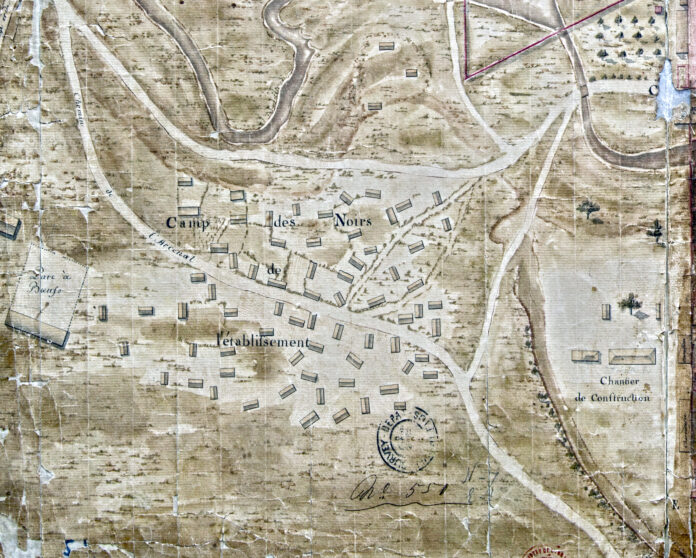Men and women in the trade
Presented in October, Jayshree Mungur’s doctorate provided an insight into the military-industrial, strategic and historical importance of the gunpowder mill for French colonial power, and the crucial role of the king’s slaves, who became slaves of the government after the Revolution.
Cossigny’s inventiveness, coupled with the hard work of a few 300 slaves at the height of activity, supplied massive quantities of gunpowder to the French navy, to slave and local merchant ships, and then after the revolutionary period, to the Napoleonic empire…After the defeat of 1810, the new British colonial power converted the site into a prison, then later an orphanage and finally a leper colony. But the innovative techniques developed here by Cossigny long inspired the French arms industry.
The other key aspect of this research concerns the condition of the workers, slaves of the king and then of the government, who constituted a class apart in the hierarchy of this population, benefiting from privileges in exchange for the services they rendered to the empire… Isle de France was the French colony with the largest number of such workers.Those who worked at the powder mill had military status, wore a specific uniform and received a salary from 1803, compensating for the fact that they could not produce and sell on their own, like those on the plantations. They could move around more freely, going out without permission until 9:30pm and even sleeping outside with permission. Slaves born in Mauritius were preferred for this status.
The evils of sulfur
France depended on them for its military conquests, at a time when Mauritius played a key role in east-west and north-south trade, mainly in the slave trade and merchandise trade. Gunpowder was used as currency in exchange for slaves.
Strictly supervised, the slaves’ tasks in the mills were hard and harmful due to the use of sulfur, their skin being affected by the acidic foam that covered them during operations. No medical records have been found, despite the presence of a hospital and a doctor dedicated to the establishment.
Women also worked on the site in other jobs, such as sieving and drying powder, cooperage, sewing and cooking, etc. They also counted for their sexual and reproductive value. They also counted for their sexual and reproductive value. Gradually, more and more slave women began to work in administration and care activities. In a country where slaves accounted for 90% of the population, the powder mill was distinguished by the diversity and technicality of the trades they performed (powder-maker, cabinetmaker, carpenter, cooper, etc.).
Jayshree Mungur’s thesis is characterized by its multidisciplinarity, blending contributions from history, archaeology and anthropology. It is also what has enabled her to open up exciting new avenues of research…





